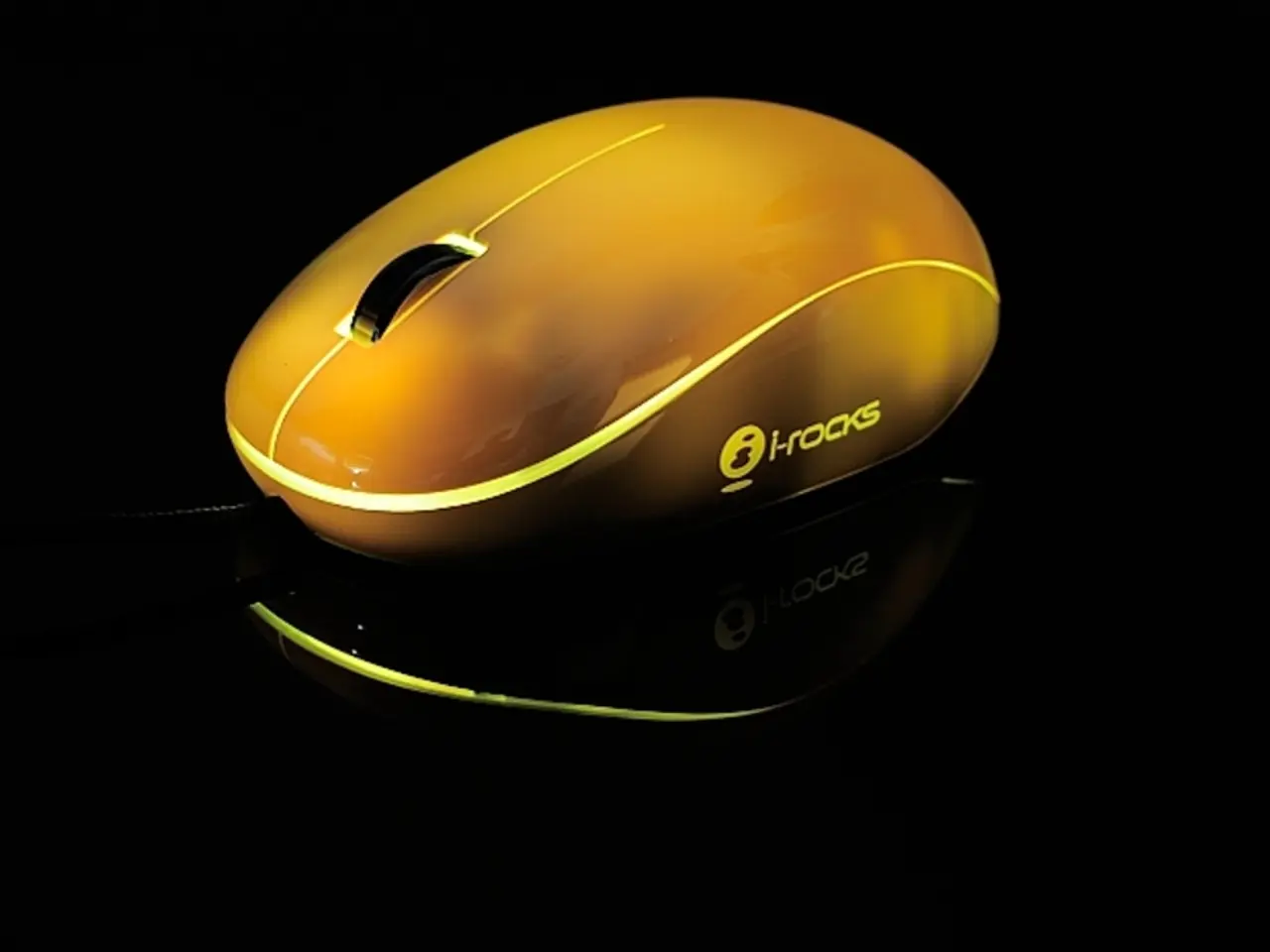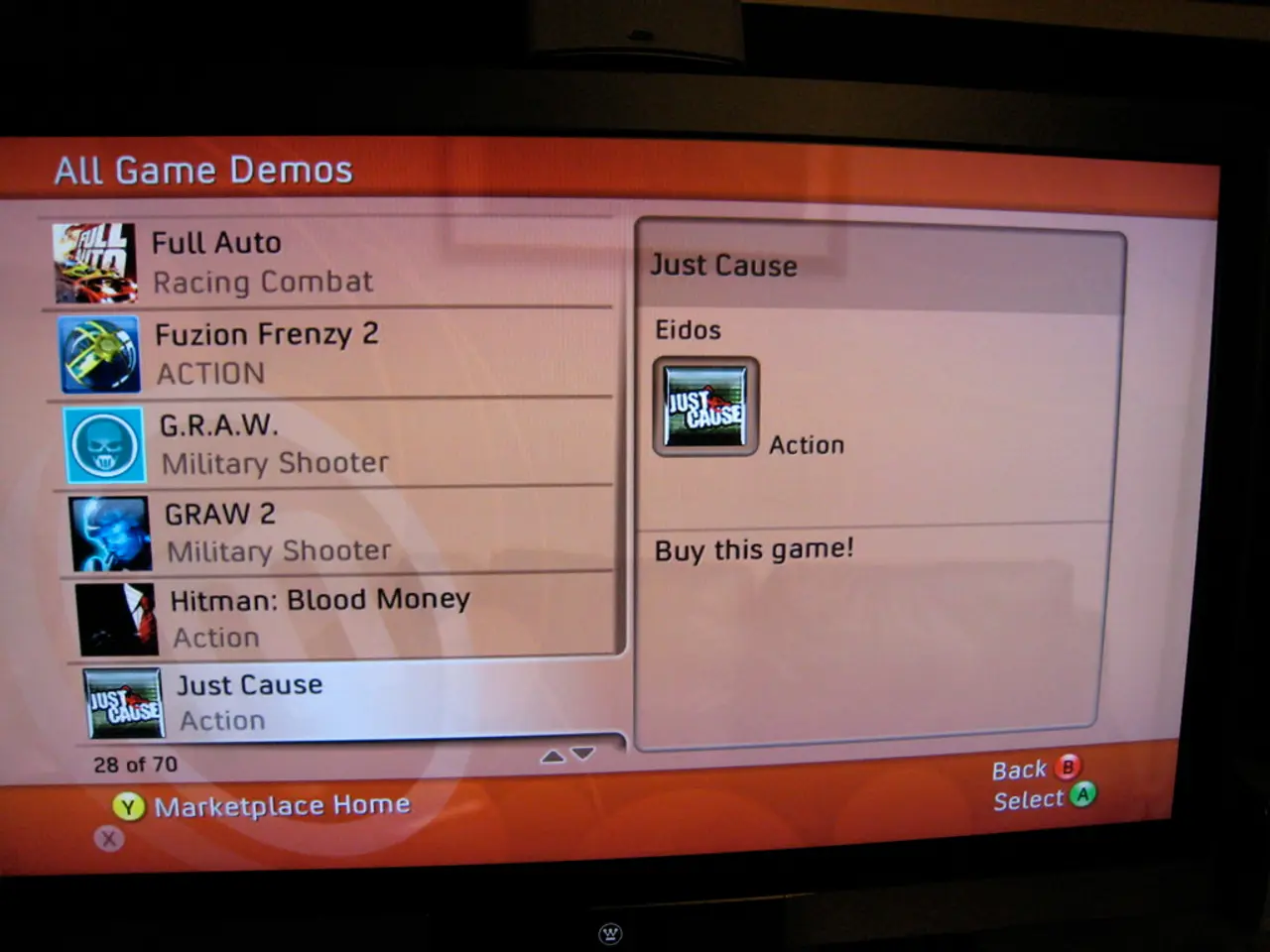Unravelling the Inner Workings of a 'Tony' 6502 Mini Arcade Machine via Reverse Engineering
In the realm of retro gaming, a distinctive mini arcade machine has caught the attention of enthusiasts. This intriguing device, recently reverse-engineered by David Given of Poking Technology, boasts a WDT65C02-compatible 6502 CPU running at 8 MHz, with 2 kB of SRAM and 8 kB of fast ROM[1].
The mini arcade machine, sourced from AliExpress, showcases a small yet vibrant 1.8-inch ST7735 LC display with a 160x128 resolution, and features a decent speaker and a user-friendly set of controls connected to an IO board[1]. The software on this machine is stored in a 4 MB SPI EEPROM that uses a simple XOR-based encryption scheme[1].
This XOR encryption is a basic form of obfuscation rather than complex cryptography, similar in principle to other arcade system tricks used to protect ROM data. For instance, Capcom's CPS-2 system employed XOR difference tables to decrypt encrypted ROMs for preservation and emulation[2]. However, the encryption method used in this mini arcade machine is relatively straightforward, making dumping the "XOR encrypted" ROM a more accessible task[1].
David Given, the reverse-engineer, has also created a basic Software Development Kit (SDK) for this mini arcade system. This SDK facilitates the development of custom software for the device, providing essential tools and libraries adapted to the hardware and CPU specifics[1]. This is noteworthy because many mini arcade consoles on the market rely on widely available retro ROM hacks, whereas this machine offers original custom games and hardware that is relatively easy to modify and reprogram[1].
The mini arcade machine's market exists in a niche where originality is appreciated. With its moderately advanced but accessible hardware and open SDK support, this device presents a unique and engaging opportunity for hobbyists interested in writing and running custom arcade games[1].
For those interested in developing for this mini arcade system, the presence of a 6502-compatible CPU suggests that development might involve assembly or C, and integration with the hardware's graphics and input systems. However, further details about the SDK's specific features or programming interface were not provided in the source document[1].
References: [1] David Given. (n.d.). Reverse Engineering the Mini Arcade Machine. Retrieved from https://pokingtechnology.com/2022/02/18/reverse-engineering-the-mini-arcade-machine/ [2] Capcom CPS-2 ROM Encryption. (n.d.). Retrieved from https://www.arcadeotaku.com/romhacking/capsule/cps2/encryption/
This mini arcade machine, sourced from AliExpress, not only showcases a unique hardware design with a 6502 CPU, but also supports the development of custom software through a basic Software Development Kit (SDK), making it an excellent choice for hobbyists who are interested in programming gadgets within the realm of technology. Furthermore, the device's open SDK and moderately advanced hardware provide an opportunity to create original custom games, setting it apart from other mini arcade consoles in the market that often rely solely on retro ROM hacks.




